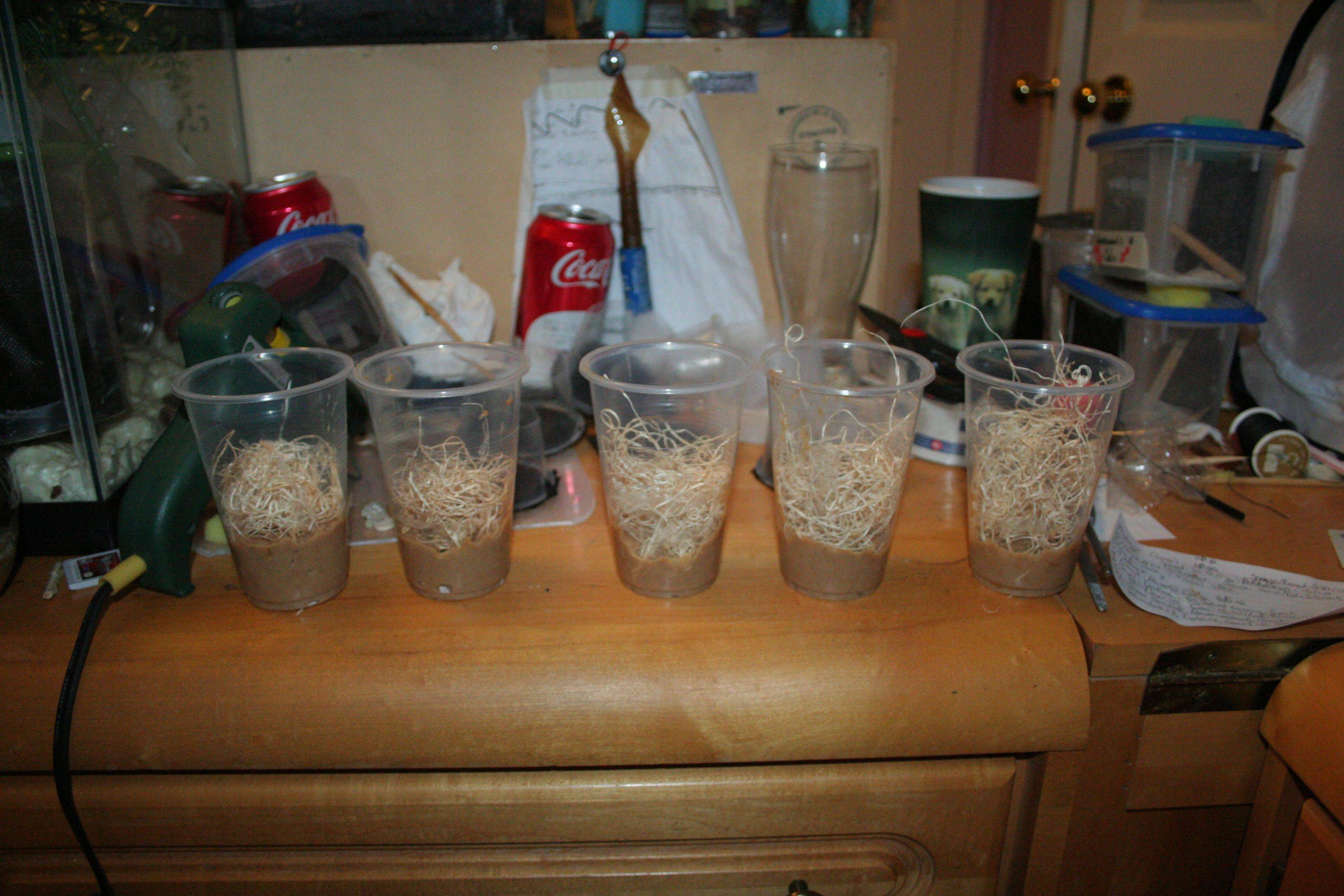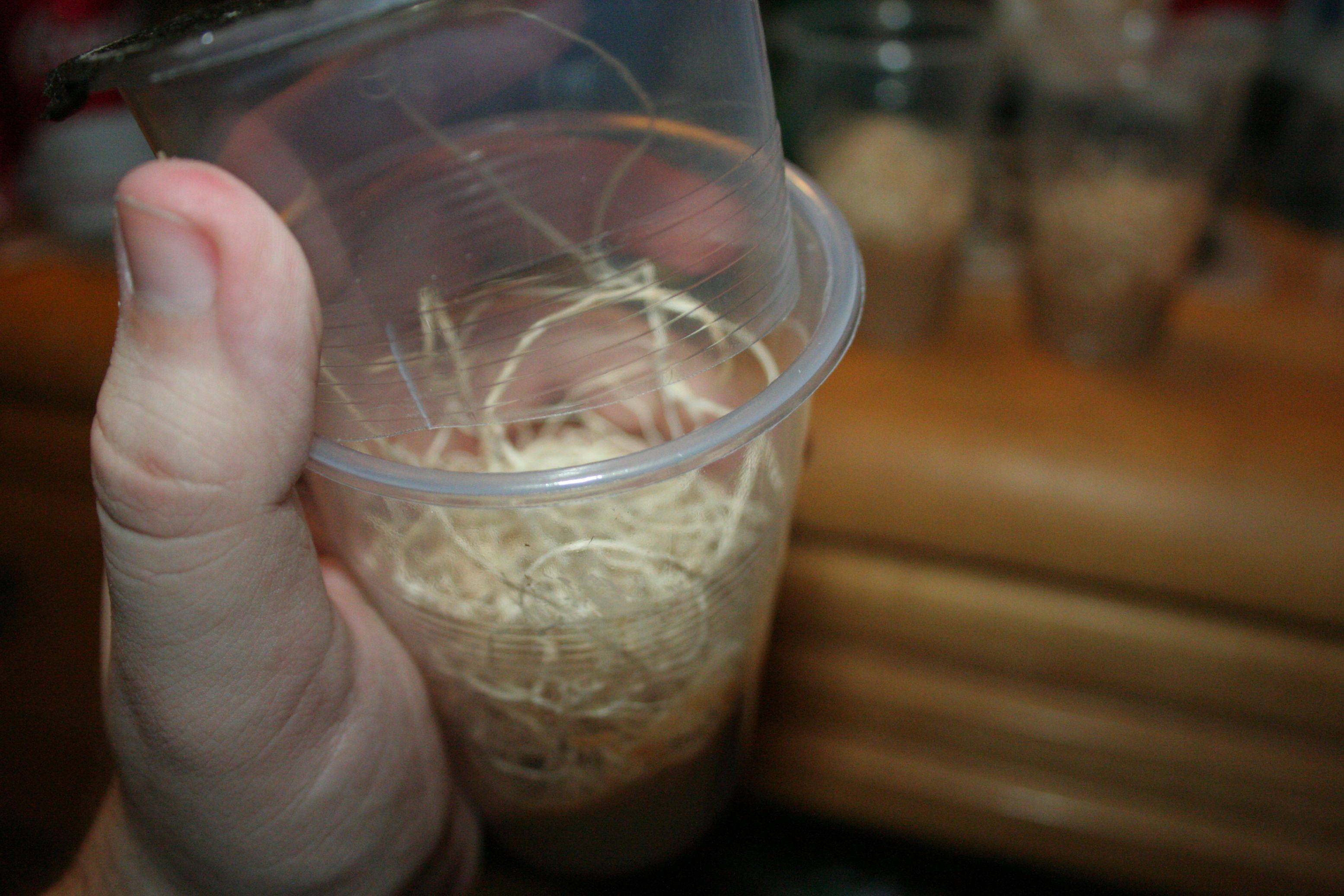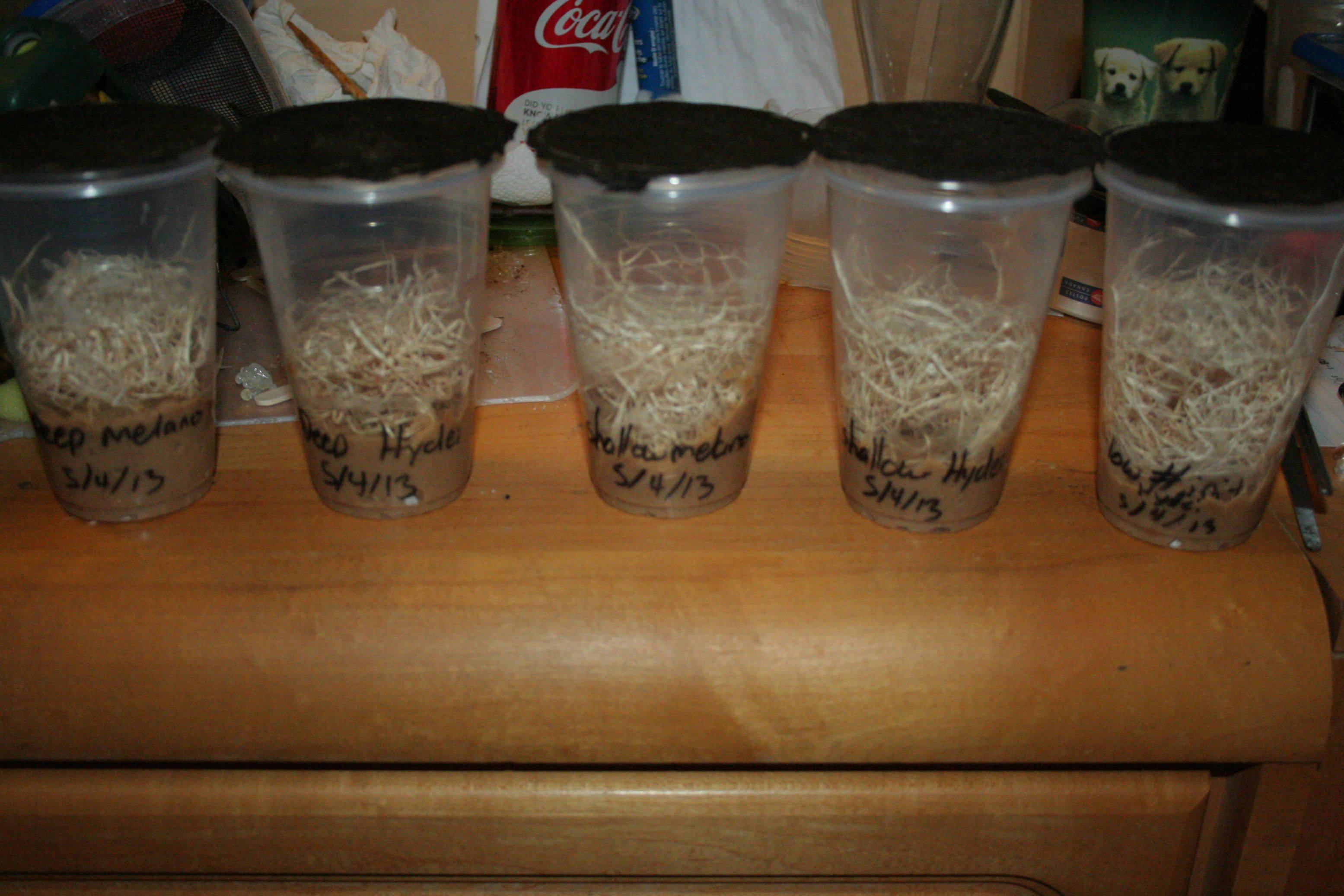Malakyoma
Well-known member
Purpose: To determine whether or not "mini" D. melanogaster and D. hydei cultures can be successful. The use of such cultures would be to feed ooth hatches by placing the entire miniature culture inside the hatching enclosure.
Hypothesis: Cultures will ultimately be successful, yet limited by space, producing a smaller number of flies than the typical culture.
Method: 5 12oz cultures will be produced using the same media and different starting conditions.
Starting conditions:
Cup 1: moderate depth of media, 1 burst melano (approx 20 flies) initial population
Cup 2: moderate depth of media, 14 hydei initial population
Cup 3: deeper depth of media, 1 burst melano (approx 20 flies) initial population
Cup 4: deeper depth of media, 14 hydei initial population
Cup 5: moderate depth of media, 5 hydei initial population
Results will be recorded and posted here as evidence to support/deny hypothesis. Conclusion will be written at the end of production cycle.
The cups with media and excelsior:

How the lids fit into place easily:

Starting conditions:

Begin Test
Hypothesis: Cultures will ultimately be successful, yet limited by space, producing a smaller number of flies than the typical culture.
Method: 5 12oz cultures will be produced using the same media and different starting conditions.
Starting conditions:
Cup 1: moderate depth of media, 1 burst melano (approx 20 flies) initial population
Cup 2: moderate depth of media, 14 hydei initial population
Cup 3: deeper depth of media, 1 burst melano (approx 20 flies) initial population
Cup 4: deeper depth of media, 14 hydei initial population
Cup 5: moderate depth of media, 5 hydei initial population
Results will be recorded and posted here as evidence to support/deny hypothesis. Conclusion will be written at the end of production cycle.
The cups with media and excelsior:

How the lids fit into place easily:

Starting conditions:

Begin Test











































